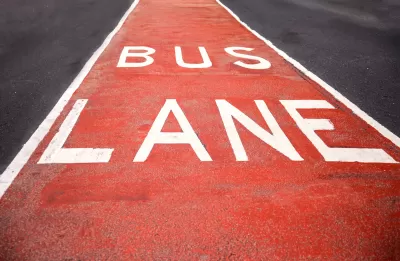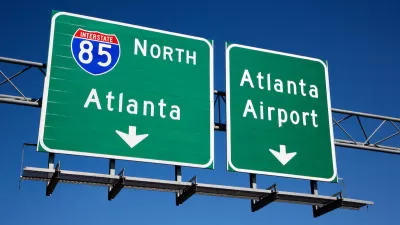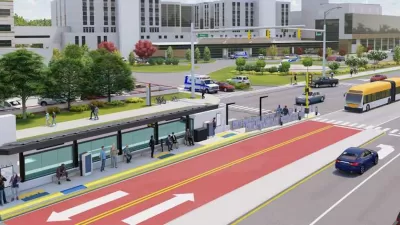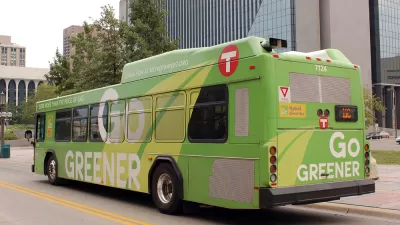Bus rapid transit lines offer a less expensive, quicker-build alternative to rail that can bring other infrastructure improvements with it.

In an article in Governing, Aaron M. Renn makes the case for bus rapid transit (BRT), arguing that the approach is a cost-effective way to improve transit service without the high costs and extensive timelines required to build new rail lines.
BRT offers other advantages, too. “Because they typically run on city streets, BRT systems also offer the chance to perform badly needed street and sewer repairs during construction. Sidewalks can be rebuilt or added. Traffic signals can be replaced, along with new features such as prioritizing buses over auto traffic and additional pedestrian safety measures.”
Renn points to the Red Line in Indianapolis as a successful example of BRT, noting that the entire project cost less than $100 million (whereas an Austin, Texas rail project is expected to cost $500,000 per mile), and the city benefited from a federal grant that funded 80 percent of the project. “That means the local funds essentially went to fix streets that already needed to be repaired, and the city got a BRT line for free, courtesy of the federal government.”
For Renn, BRT is a clear solution for many cities, offering a way to make transit service better and more reliable while making other infrastructure improvements.
FULL STORY: The Bus Lines That Can Solve a Bunch of Urban Problems

Planetizen Federal Action Tracker
A weekly monitor of how Trump’s orders and actions are impacting planners and planning in America.

Congressman Proposes Bill to Rename DC Metro “Trump Train”
The Make Autorail Great Again Act would withhold federal funding to the system until the Washington Metropolitan Area Transit Authority (WMATA), rebrands as the Washington Metropolitan Authority for Greater Access (WMAGA).

The Simple Legislative Tool Transforming Vacant Downtowns
In California, Michigan and Georgia, an easy win is bringing dollars — and delight — back to city centers.

The States Losing Rural Delivery Rooms at an Alarming Pace
In some states, as few as 9% of rural hospitals still deliver babies. As a result, rising pre-term births, no adequate pre-term care and "harrowing" close calls are a growing reality.

The Small South Asian Republic Going all in on EVs
Thanks to one simple policy change less than five years ago, 65% of new cars in this Himalayan country are now electric.

DC Backpedals on Bike Lane Protection, Swaps Barriers for Paint
Citing aesthetic concerns, the city is removing the concrete barriers and flexposts that once separated Arizona Avenue cyclists from motor vehicles.
Urban Design for Planners 1: Software Tools
This six-course series explores essential urban design concepts using open source software and equips planners with the tools they need to participate fully in the urban design process.
Planning for Universal Design
Learn the tools for implementing Universal Design in planning regulations.
Smith Gee Studio
City of Charlotte
City of Camden Redevelopment Agency
City of Astoria
Transportation Research & Education Center (TREC) at Portland State University
US High Speed Rail Association
City of Camden Redevelopment Agency
Municipality of Princeton (NJ)





























